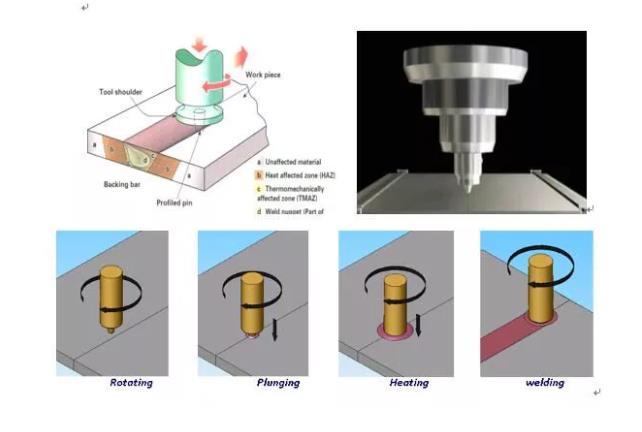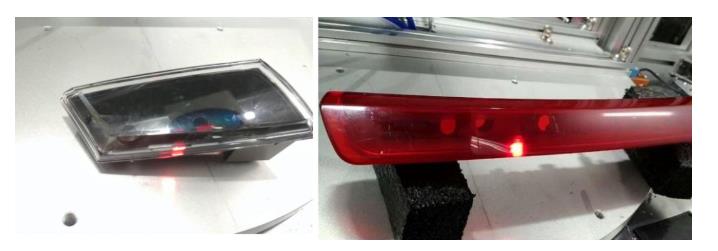Copyright © Shindary Automotive Parts Co., Ltd. All Rights Reserved
Car Tail Lamp Welding Process And Laser Welding
Since the day the car was born, taillights have long been an indispensable feature of cars. From early indication lighting to today's large-scale functions such as Chery Right Tail Lamp, which integrate functions such as steering, braking, reversing lighting, display, fog lights, etc., taillights have become one of the sharp tools for many car companies to capture consumer attention. As one of the few exposed plastic parts outside the body, the welding process of taillights has also attracted much attention, and welding has naturally become the most critical process for taillights.
As Chery Right Tail Lamp Supplier China tells you that the most mainstream tail lamp welding processes on the market are: vibration friction welding, hot plate welding, ultrasonic welding, laser welding, etc. Among them, vibration friction welding, hot plate welding and ultrasonic welding are traditional welding methods. Laser welding has gradually risen in recent years with the rapid decline of equipment costs. The following is a simple comparison of these welding processes.
First, ultrasonic welding
The ultrasonic welding method forms a seam by mechanical high-frequency vibration. The parts to be assembled are clamped between the oscillating welding head and the fixed welding head under pressure, and then at a right angle to the contact surface, and receive ultrasonic vibration with a frequency of 20 to 40 kHz. The alternating high-frequency stress generates heat at the joint interface, resulting in a high-quality weld.
The tools used for this process are very expensive and therefore suitable for larger production volumes. Applications include valves and screening procedures for welding medical equipment on multihead machines, boxes, automotive parts, vacuum cleaner housings, and more.
Second friction welding
Thermoplastic friction welding (also known as "spin welding") works on the same principle as metal welding. In this welding process, one substrate is fixed and the other substrate is rotated at a controlled angular velocity. When the parts are pressed together, the frictional heat causes the polymer to melt and form a weld upon cooling. Friction welding can produce excellent welding quality. The welding process is simple and repeatable. It is only suitable for applications where at least one part is circular and does not require angular alignment.

Third, vibration welding
Vibration welding is also called linear friction welding. The two thermoplastic parts rub against each other at the appropriate pressure, frequency, and amplitude until sufficient heat is generated to melt the polymer. After the vibration stops, the parts are aligned with each other, and the molten polymer solidifies to form a weld.
The main advantage of this welding process is that it can weld large and complex linear parts at high speed. Other strengths include the ability to weld multiple parts at the same time, simple welding tools, and the ability to weld almost all thermoplastic materials, primarily for the automotive and home appliance industries.
Fourth, hot plate welding
For plastic bonding, hot plate welding is the simplest mass production technique. A high-temperature hot plate is sandwiched between the surfaces to be seamed until softened. At this time, the hot plate is pulled out, the two surfaces are bonded under a controlled pressure, and held together for a certain period of time. The molten surface is then allowed to cool to form a weld. The welding tool or heating assembly is equipped with a built-in heater to prevent plastic from sticking to the welding tool.
This welding process is used in a variety of everyday items, such as vacuum cleaner housings, washing machine and dishwasher parts, brake fluid tanks, rear lights, indicator lights and other automotive parts. The disadvantage of the hot plate welding method is that the welding speed is slow.
Fifth laser welding
The most commonly used form of laser welding is called laser transmission welding. First, two plastic parts to be welded are clamped together under pressure, and then a short-wave infrared laser is directed to the part to be bonded. The laser beam passes through the upper layer of light-transmitting material and is then absorbed by the lower layer material. The laser energy is absorbed and converted into thermal energy, because the two layers of material are pressed together. Thermal energy is conducted from the absorbing layer to the light-transmitting layer, causing the two layers of material to melt and combine.
Plastic laser welding technology belongs to non-contact welding technology. Compared with other welding methods, it has non-contact, air tightness, no water leakage, fast welding speed, high precision, high weld strength, no flash, no residue, no vibration, minimum thermal stress, easy to control, and good flexibility , Good adaptability and many other advantages. Plastic laser welding can replace traditional welding processes on the market with many advantages.

Previous: Automechanika Shanghai 2019
Shindary Automotive Parts Co., Ltd.